Neck pain to shoulder: Causes, Symptoms, Diagnosis, Treatment
What is a Neck pain to Shoulder?
Neck pain to the shoulder is a common symptom of many different medical conditions and injuries around the neck region. A pinched nerve in your cervical spine can cause pain that radiates toward your shoulder or fingers. Because of that patient may have trouble gripping or lifting objects.
Neck and Shoulder pain can happen if numbness or weakness goes into the shoulders and fingers. You might have localized neck pain or pain radiating from the neck to other areas such as the shoulders or arms (cervical radiculopathy). Sometimes the patient feels headache. Because of discomfort irritation in the neck can affect muscles and nerves connected to the head.
Neck to Shoulder pain is also known as cervical radiculopathy. Cervical radiculopathy most often comes from changes in your cervical spine caused by aging or injury. Bone spurs can cause irritation or pinching of the nerves that run through the hollow space in the vertebrae. It can be acute (lasting from days to up to one and a half months) or chronic (lasting longer than 3 months to years). Neck pain can interfere with daily activities and reduce your quality of life if it’s untreated.
Who is more affected by neck pain to shoulder?
-It’s common in men than in women. It occurs in about 1/3 of people at least once a year.
What does radicular pain feel like?
Some people describe the pain as:
Radicular pain:- This pain can radiate along a nerve from the neck region into the shoulder. This nerve pain might feel like it is burning.
Cervical radiculopathy:- Neurological deficits (problems with reflexes, sensation, or strength). It may be experienced in the arm due to nerve root compression. It may also be accompanied by radicular pain.
Neck pain to the shoulder typically develops in one following ways:
- Slowly over time.
- Immediately after an injury.
- late reaction after an injury.
- Sometimes neck pain can start in the middle of a normal day without any reason.
- Neck pain symptoms might be constant, go away immediately, come and go regularly, or return intermittently.
See When Is a Neck Pain to shoulder Serious?
- Radiating pain in both arms or legs (myelopathic pain)
- Numbness or weakness in arms or legs
- Problems with balance or coordination
- Loss of bowel or bladder control
- Unintended weight loss
- Fever or chills
- Severe headache with a stiff neck
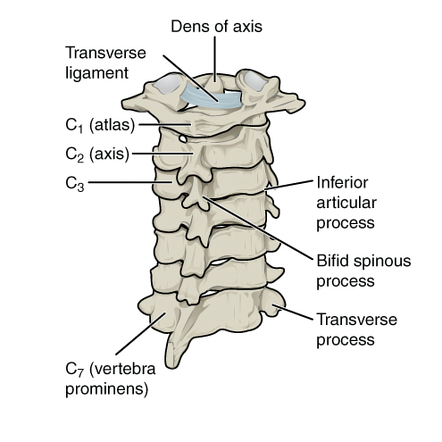
Anatomy of the cervical spine
The cervical spine is an important one anatomically, clinically, and therapeutically.
It is the region where the nerves of arms arise through the brachial plexus and where the cervical plexus forms providing innervation to the diaphragm surrounded by other structures.
It also allows the opening of important vascular structures to reach the brain and allows attachment area for muscles that move the head, neck, and shoulder girdle.
To understand this complicated region, we will consider the bony structures first, and then discuss the ligaments, nerves, and musculature that are associated with this region of the cervical spinal column, come to the conclusion with some clinical implications of damage to some of these structures.
Types of vertebrae
- Typical (C3-C6)
- Atypical (C1, C2, C7)
Structure of typical vertebrae
- Vertebral body
- Transverse process
- Spinous process
- Vertebral foramen
- Vertebral arch
- Articular processes
Intervertebral discs
The vertebral column protects the spinal cord which runs through its central cavity.
Between vertebrae, there is an intervertebral disc that is filled with a gelatinous substance that known as nucleus pulposus, which provides cushioning to the spine and it surrounded by annulus fibrosis. They allow the vertebrae to move and work as shock absorbers.
Ligaments
- The ligaments of the cervical spine are a combination of ligaments that continue from the lower regions of the vertebral column and ligaments that are unique to the cervical spine.
- Anterior longitudinal ligament (ALL)
- Posterior longitudinal ligament (PLL)
- Ligamentum flavum
- Intertransverse ligament
- Interspinous ligament
- Nuchal ligament
- Alar ligament
- Apical ligament
- Transverse ligament
Nerves
Cervical plexus and brachial plexus
Many important nerves arise from the cervical spinal cord.
Most of these nerves originate in one of two plexuses: The cervical plexus or The brachial plexus
Cervical plexus
It arises from the anterior rami of the spinal nerves associated with C1-C4 (some texts include the C5 nerve root).
The cervical plexus lies deep to the sternocleidomastoid (SCM) muscle and anteromedial to the levator scapulae and middle scalene muscles.
The branches of this plexus can be categorized as either muscular or cutaneous.
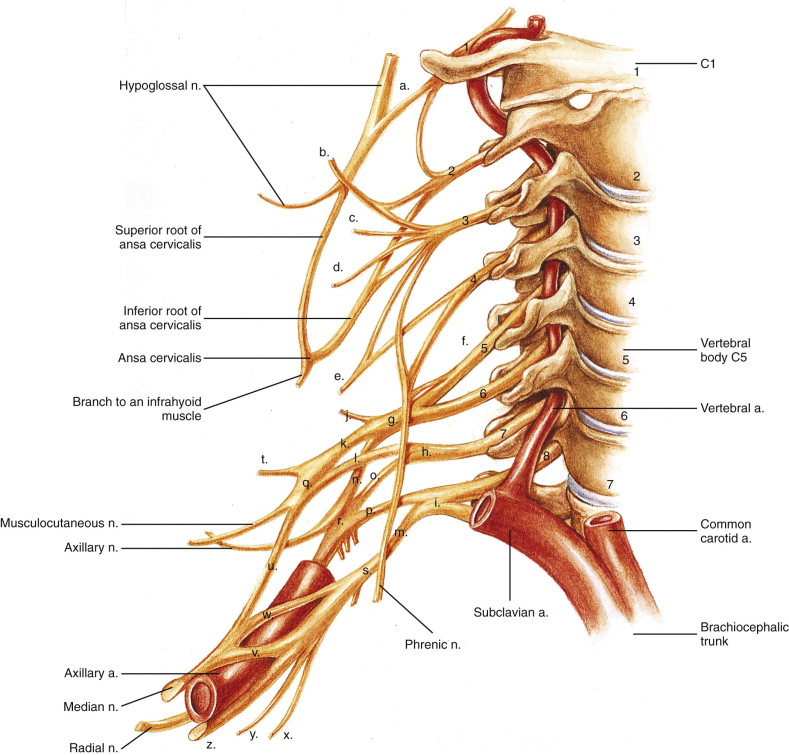
Muscular branches
- Phrenic nerve(C3-5): It supplies the diaphragm.
- Ansa cervicalis (C1-3): It supplies the infrahyoid muscles.
- Suboccipital Nerve (C1): It supplies the suboccipital muscles.
- Nerves roots of C1-C3: It supplies the prevertebral muscles.
The cervical plexus also contributes branches to these two nerves:
Dorsal scapular (C4,5): It supplies the rhomboid major and minor, and levator scapulae muscles.
Long thoracic (C5-7): It supplies the serratus anterior muscle.
Cutaneous branches
- Lesser occipital (C2): It supplies the skin of the neck and scalp.
- Great auricular (C2,3): It supplies the skin surrounding the ear.
- Transverse cervical (C2,3): It supplies the skin over the anterior cervical region.
- Supraclavicular (C3,4): It supplies the skin over the clavicle and shoulder.
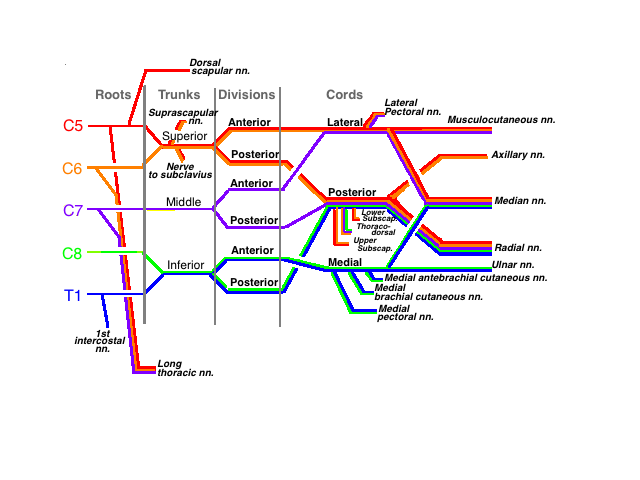
Brachial Plexus
Brachial plexus arises from the anterior rami of the spinal nerves associated with C5-T1 where the nerve roots appear between the anterior and middle scalene muscles.
The nerve roots instantly combine to form nerve trunks:
C5-C6 nerve roots form the upper trunk
C7 nerve root form the middle trunk
C8-T1 nerve roots form the lower trunk
Each trunk divides into divisions: Anterior division
Posterior division
Divisions combine to form three cords:
- The lateral cord
- The medial cord
- The posterior cord
- The cords combine to form the five major nerves that supply the majority of the upper limb.
Musculocutaneous (C5-7): It supplies muscles of the anterior compartment of the arm, and the skin of the lateral forearm.
Median (C5-8, T1): It supplies the majority of the muscles in the anterior compartment of the forearm, and the skin of the lateral 3 and a half fingers (mostly palmar aspect) and palm.
Ulnar (C8, T1): It supplies the majority of the intrinsic muscles of the hand, and the skin of the medial 1 and a half fingers and hand (palmar and dorsal aspects).
Radial (C5-8, T1): It supplies all muscles in the posterior compartments of the arm and forearm, and the skin of lateral 3 and a half fingers (dorsal aspect).
Axillary (C5,6): It supplies the deltoid and teres minor muscles, and the skin over the deltoid.
Also, a number of minor nerves arise from the brachial plexus. The dorsal scapular nerve and long thoracic nerve mentioned previously, these minor nerves are the:
Nerve to subclavius (C5,6): It supplies the subclavius muscle.
Suprascapular (C5,6): It supplies two of the rotator cuff muscles (the supraspinatus and infraspinatus).
Lateral pectoral (C5-7): It supplies the pectoralis major muscle.
Medial pectoral (C8, T1): It supplies the pectoralis major and pectoralis minor muscles.
Medial cutaneous nerves of the arm and forearm (C8, T1): It supplies the skin of the medial aspect of the arm and forearm.
Thoracodorsal (C6-8): It supplies the latissimus dorsi muscle.
Upper and lower subscapular (C5,6): Together they supply one of the rotator cuff muscles, the subscapularis muscle.
The teres major and teres minor muscles are supplied by the lower subscapular nerve.
Muscles attached to the cervical spine
Most of the muscles in the cervical region are not attached to the cervical spine, but many of them attach to the cervical spine.
The following muscles originate or insert (at least partially), or both, onto the vertebrae in the cervical spine.
If a muscle attaches to the skull it will move the head, if the muscle does not attach to the skull then it will only move the neck.
Anterior neck muscles which flex the head, flex the neck and elevate ribs 1 and 2
Rectus capitis anterior
Rectus capitis lateralis
Longus capitis
Longus colli
Anterior scalene
Middle scalene
Posterior scalene
Superficial back muscles which extend the head and neck, elevate and retract the scapula, and elevate ribs:
Trapezius
Levator scapulae
Rhomboid minor
Serratus posterior superior
Suboccipital muscles which extend and rotate the head:
Rectus capitis posterior major and minor
Obliquus capitis superior and inferior
Deep back muscles
spinotransversales muscles which extend the neck, and rotate the head:
Splenius capitis
Splenius cervicis
Erector spinae muscles that extend the neck and head:
Iliocostalis muscle
Iliocostalis cervicis
Iliocostalis thoracis
Longissimus muscle
Longissimus capitis
Longissimus cervicis
Spinalis cervicis
Transversospinalis muscles which extend the neck, extend and rotate the head:
Semispinalis capitis
Semispinalis cervicis
Semispinalis thoracis
Multifidus
Rotatores cervicis
Epidemiology:
Generally study of the epidemiology of neck pain to the shoulder was performed between 1976 and 1990 in Ronchester MN. These authors found that the yearly incidence of neck pain with shoulder pain was 107.3 per 100,000 for men and 63.5 per 100,000 for women. Normally speaking, the incidence of trauma preceding the onset of neck pain with shoulder pain is relatively low.
Pathophysiology:
In nearly all cases of neck pain to the shoulder, the key pathophysiologic feature is inflammation.
Inflammation can result from acute herniation of an adjacent cervical disc that subsequently irritates the nerve root.
The inflammation also can exacerbate degenerative changes to such a degree that osteophytes or changes associated with disc dehydration can irritate the nerve root.
It is the direct compression of the nerve root that produces the symptoms.
What are the possible causes of neck pain with shoulder pain?
Many different medical conditions and trauma to the neck region can cause neck pain.
Conditions that may cause neck pain include:
Age:
Degenerative conditions such as osteoarthritis of the cervical spine(the wearing down of joint cartilage) and spinal stenosis (narrowing of the spaces in the spine) can lead to neck pain. Over time, stress and motion can lead to spinal disc degeneration, causing a bulging disc or irritating nerve roots.
Injury:
Trauma from the sudden forced movement of the neck or head and rebound in the opposite direction (whiplash) can cause pain and soreness in the muscles of the neck region. The spinal cord, nerve roots, muscles, ligaments, discs, and vertebral joints in the spine of the neck can be affected by trauma injuries.
Mental stress: Stress can cause the muscles to feel tight or achy and later on affect your joints.
Muscle strain:
Overusing your neck muscles during repetitive actions or strenuous activities can lead to stiffness and pain around the neck region.
Nerve compression:
Disc bulging or osteophytes in the vertebrae of your neck can press on the nerves branching out from the intervertebral foramen.
Conditions that affect spinal balance:
Poor posture (sitting for long periods; poor computer/desk/chair positioning), obesity, and weak abdominal muscles can all affect spine posture and contribute to neck pain.
Growths:
In rare cases, masses including tumors, cysts, and bone spurs around the cervical spine can cause neck pain.
Other health conditions:
Meningitis, rheumatoid arthritis, cancer.
Symptoms
Cervical radiculopathy:-
Neurological deficits (problems with reflexes, sensation, or strength). It may be experienced in the arm due to nerve root compression. Cervical radiculopathy may also go along with radicular pain.
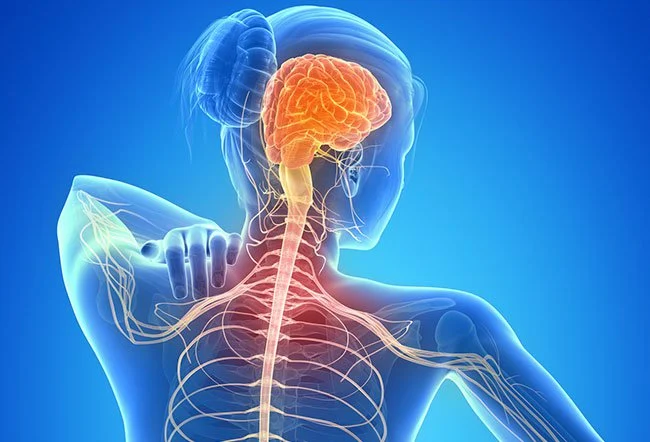
What Is Cervical Radiculopathy?
The trouble with gripping or lifting objects. This problem can happen if numbness or weakness goes into the arm and fingers.
Sometimes the patient feels headaches. Because of discomfort irritation in the neck can affect muscles and nerves connected to the head.
Radicular pain:- This pain can radiate along a nerve from the neck into the shoulder and arm. This nerve pain might feel like it is burning or searing.
When you move your neck you feel an abrasion.
Sharp pain:-
The patient feels stabbing-like pain. This pain localized to one spot. This type of pain typically occurs in the lower neck.
Stiff neck:-
Difficult to move your neck side by side.
General soreness around the neck region. It is described as achy, not sharp.
Problem with your balance
Difficulty in controlling your bladder or bowels
Atypical symptoms include vertigo, palpitation, nausea, discomfort in your abdomen or GI system, tinnitus, blurred vision, and hypomnesia (memory problems). Some studies have also shown that chronic neck pain has been linked to higher blood pressure.
Eliminating the Red flags
Doctors should ensure that they carry out thorough subjective screening for patients who present with neck pain.
Subjective assessments should be used to eliminate possible red flags in pathology such as;
- Fractures
- Instability of the vertebrae
- Coronary Artery Dysfunction (CAD)
- Myelopathy
- Cancer
- Infection
- Visceral disorders
- Clinicians should also rule out potential myelopathy.
- Dizziness
- Diplopia (double vision)
- Drop attacks
- Dysphagia (swallowing difficulties)
- Dysarthria (problems with speech)
- Nystagmus (involuntary eye movements)
- Nausea
How is the neck pain to shoulder pain diagnosed?
- Sharp or severe pain is seen in the neck and shoulders.
- Range of motion is decreased due to stiffness or tightness in the shoulder and neck
- Intermittent or continuous headaches.
- Nerve pain with tingling and insensitivity in the upper limbs.
- Pain in eyes.
- X-ray: X-rays can help to reveal degenerative changes to the spine and problems like bone spurs.
- Computed tomography (CT): A CT scan is an imaging technology that uses multiple X-ray images to help view the neck and spine in different “slices.”
- Magnetic resonance imaging (MRI): An MRI scan employs powerful magnetic and radio waves to create highly detailed images of bone and soft tissues, including those of the spinal cord.
- Electromyography (EMG): An EMG and nerve conduction study involve the insertion of a needle into a muscle to test nerve signal speed, which can help diagnose a pinched nerve.
- Blood tests: A complete blood count (CBC), erythrocyte sedimentation rate (ESR), and C-reactive protein (CRP) test can help identify if inflammation or infection is present.
How is the neck pain to the shoulder managed or treated?
Treatment for neck pain to the shoulder pain depends on the cause. It aims to relieve pain and improve the function of daily lifestyle.
Standard treatments for these symptoms include:
- Medicines include nonsteroidal anti-inflammatory drugs (NSAIDs) to decrease pain and inflammation and muscle relaxants too.
- Physical therapy ( to strengthen the muscle and improve functions of daily living).
- Steroid injections near the nerve roots in the neck region to help relieve pain and inflammation.
- Surgery to repair compressed or damaged spinal discs or fuse some vertebrae in the spine.
Physiotherapy Treatment for neck pain to shoulder :
Pain management:
Electrotherapy can effective for pain management.
What is Electrotherapy?
Electrotherapy is a term for using mild electrical pulses to stop the pain in a point area of the body. Generally, all of these therapies use a device with electrodes to supply a low-voltage electrical current to pain areas.
The main goal of electrotherapy is pain management.
Uses of electrotherapy :
It can help improve blood circulation, which activates the body’s healing process.
This may also help to strengthen muscles, stimulate bone growth, and repair damaged tissues.
Moreover, electrotherapy may increase movement and function in an affected area.
These are low-voltage electrical currents, a person usually only senses a tingling sensation.
Some people even find using electrotherapy machines to be relaxing purpose.
The side effects of electrotherapy are generally mild.
The most common side effect is patients complaining of skin irritation because of the adhesive on the electrodes. Sometimes burning sensation on the surface of the skin because of not using the device properly.
Here are common types of electrotherapy that your physiotherapist may recommend:
TENS (Transcutaneous Electrical Nerve Stimulation)
One of the most common electrotherapy devices use for pain relief. Small and sticky pads with electrodes are placed over or near the area where you sense pain. Your physiotherapist will decide the area of placement for electrodes. A series of low-voltage electrical currents send by the battery-operated unit to the area. You will increase or decrease the electrical current as well as the frequency and patterns of stimulation by the controller.
How do TENS work?
Generally TENS unit assists with blocking pain signals from the nerves to the brain. The change of these pain receptors can provide temporary pain relief. TENS may improve circulation and reduce muscle spasms in the neck region.
Certain TENS treatments only last for a half-hour. In some cases, you may use the TENS device for several hours at a time. You may want to keep a daily diary of your pain levels, the dosage you use, and any other symptoms that may come and go. This supports you and your physiotherapist to troubleshoot and find the best dosage for your pain relief.
PENS(Percutaneous Electrical Nerve Stimulation)
An alternative to TENS, PENS (percutaneous electrical nerve stimulation) uses needles on behalf of pads to supply electrical currents. It works as acupuncture with electrical stimulation. The benefit of using needles rather than pads means the pulse of the electrical current is closer to the pinched nerves and muscles. This can help to relieve pain immediately in some patients.
Generally, this therapy is used as an outpatient procedure. You can also use a PENS device at your home.
PEMF(Pulsed Electromagnetic Field Therapy)
It takes a different process to use electricity for pain relief. PEMF tries to heal at the cellular level rather than treating nerves or muscles. Specialized coils create an electromagnetic field around part or all of the body throughout the treatment. These electromagnetic waves stimulate the cell’s electrons and assist the healing process and stimulate bone growth.
PEMF treatments can recover the cells and make them more active in healing, rebuilding, and fighting disease. Treatment is performed in a therapist’s clinic. Some PEMF products can be purchased for home use.
IFT (Interferential therapy):
IFT is a pain-relieving modality without side effects.
Effects of Interferential Therapy:
- Increases blood circulation.
- Reduces pain and inflammation.
- Cures edema and hematoma.
- Removes waste substances from the affected area.
- Decreases blood pressure.
- Treats chronic ligamentous lesions.
- Causes vasodilation.
- Increases metabolic rate.
- Improves restricted movements of joints.
- Increases muscle stimulation.
- Restores the lost movement of muscles.
Conditions and Symptoms treated by IFT:
- Disc herniation
- Spinal canal stenosis
- causalgia, herpes zoster, and neuralgia in these conditions Pain relief by IFT
- Cervical spondylosis
- Muscle injuries
- Ligamentous injuries
- Osteoarthritis
- Ankylosing spondylitis
- Rheumatoid arthritis
- Frozen shoulder
- Reduction of Edema
Contraindications:
- Infective condition
- Malignancy
- Pacemakers
- Loss of sensation
- Danger of Hemorrhage
- Large open wounds
- Dermatological Conditions
- Pregnant Uterus
- Arterial disease
- Febrile condition
- Deep vein thrombosis
- During menstruation
- Unreliable patient
- Fever
- It depends on your radicular symptoms.
Ultrasound therapy:-
It is effective in neck pain patients who have trigger points over the trapezius muscle or are associated with myofascial pain syndrome. That ultrasound therapy inactivates the trigger points and decreases the tension of soft tissues.
Cervical traction:
Cervical traction help to relieve pain. It involves using weights to increase space between the cervical joints and also relieve the pressure on the cervical discs and nerve roots.
Exercises for neck and shoulder:
Isometric exercises for the neck:
You can perform these exercises while sitting, standing, or lying on your back.
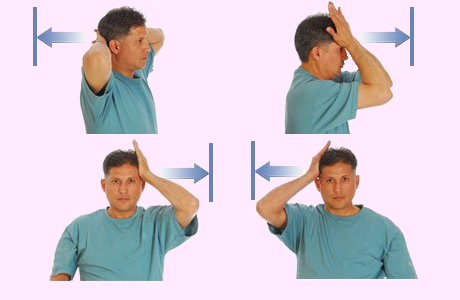
1. Cervical flexion:
Flex your neck slightly forward and place your hand on your forehead.
Try to flex your head forward while pressing back with your hand.
2. Cervical extension:
Keep your neck straight and put your hands at the back of your head.
Try to press your head backward while pressing forward with your hands.
3.Cervical side flexion:
Keep your neck straight and place your right hand on the right side of your head.
Try to carry your head down to your right shoulder while pressing up with your right hand.
Repeat the side flexion on both sides but for the left side press with your left hand.
4. Cervical rotation:
Put your right hand at chin level and turn your head slightly to the left.
Put your left hand on the left side of your face.
Turn your head to the left while pressing it back with your left hand.
Repeat the rotation on both sides but the right side of your face with your right hand.
With specific exercises and stretches, your symptoms may relieved.
Physiotherapist focuses on stretching and strengthening your muscles and also correct your posture.
Your physiotherapist will advise how long and how often you should practice these exercises, based on your individual symptoms and condition.
Stretching & exercises for neck pain with shoulder pain
Below, we’ve got a treatment plan for moves to help stretch and strengthen the muscles in your:
- neck
- shoulders
- upper back
For good results, try incorporating these stretches and exercises 3-4 times per week.
How to warm up
First of all, you’ve got to loosen up the muscles in your problem area with a dynamic warmup that includes mobility exercises.
Before you begin your workout, you would like to prepare your soft tissues (muscles, ligaments, and joints) for the work ahead. Consequently, adding dynamic stretching can help you warm up. You will also benefit from a 7–10 minute cardio warmup (such as walking, cycling, or a mild jog).
While static stretches — where you hold a stretch in one position for a few times that help to restore and maintain flexibility and promote the range of motion, have to be left until after your workout.
This is because prolonged static stretching (especially 50-60 seconds or more) may temporarily reduce your muscular strength and endurance, response time, and overall performance.
If you want to add some static stretching to your warmup, attempt to limit the stretches to 10–20 seconds. Otherwise, leave it till your workout is completed.
Dynamic stretches [the neck, shoulders, and upper back]
The following exercises and perform them before your workout for 30 – 60 seconds each.
Turn your neck
Slowly turn your neck towards one side and hold this position for 5-7 seconds.
Ensure that your jaw is at the same height throughout the stretching.
Gently turn your neck to the other side and hold this position for 5-7 seconds.
Repeat the exercise 3 times.
Neck tilt
It is the simplest exercise to relieve neck pain. Tilt your neck towards the floor and touch your chin to the chest.
Hold this position for at least 5-10 seconds. Return to the normal position.
Repeat the exercise 5-10 times according to your comfort.
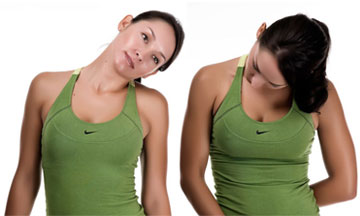
Side tilt
Tilt your neck towards your shoulders and hold the position for 3-5 seconds.
Return your head to normal.
Tilt your neck to the other side and hold this position for 3-5 seconds.
Repeat the exercise at least 5-10 times on each side.
Shoulder extension
Straight your body and make sure your posture is perfect.
Push your neck forward and draw your shoulders together in alignment.
Hold the position for 5-7 seconds and feel the stretch on your neck muscles.
Gently return to your normal position.
Repeat the exercise 5-10 times according to your comfort.
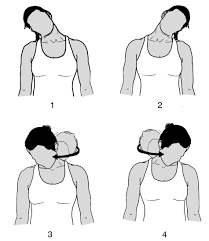
Neck roll
Good for: neck and upper back
Stand or sit facing forward
Begin by tilting your neck to the proper
You should feel the stretch through your neck to your trapezius muscle
After a second, slowly roll your head counterclockwise
Pause for a second or two once you reach your left shoulder
Complete the rotation by ending in the normal position
Repeat these steps, rolling clockwise
Repeat this sequence 2–3 times.
Shoulder roll
Good for: shoulders and upper back
Stand with your arms facing the floor at your sides.
Roll your shoulders backward in a circular motion, completing 4-5 rotations.
Then complete 4-5 rotations forward.
Repeat this sequence 4-5 times.

Arm circles
Good for: shoulders
Stand with your arms out to your sides (90-degree abduct your arms), parallel with the floor, with your hands facing down.
Slowly making small circles forward at first and eventually larger ones. Do this 15-20 times.
Reverse the movement and do another 15-20 circles.
Overhead arm reach
Good for: shoulders and upper back
Sit in a chair and face forward.
Extend your right shoulder above your head and reach to the left side.
Bend your torso until you feel the stretch in your right latissimus dorsi muscle and shoulder.
Return to the normal position. Repeat 4-5 times, then do the same stretch with your left arm.
Chair rotation
Good for: upper, mid, and lower back
Sit sideways in a chair and your right side should be resting against the back of the chair.
Keeping your legs immobile, rotate your torso to the right, reaching for the back of the chair with your hands.
Hold your upper body in rotation, using your arms to stretch deeper as your muscles loosen.
Hold for 10-15 seconds. Repeat 3-5 times on each side.
Exercises
Exaggerated nod
The exaggerated nod counterbalances the downward and towards head position by pulling your shoulders down and back and increasing neck mobility.
How to do it:
Sit at your desk or relax your shoulder while standing. With your mouth closed and make sure your teeth touching but not clenching and look up to the ceiling.
Stop here and open your mouth and relax your jaw. Now see if you can bring your head further back up to an inch or two.
Keep your head fixed there and bring your lower part of the jaw to your upper part of the jaw, closing your mouth. You should feel a stretch in the front area of your neck.

Downward-Facing Dog
Downward-Facing Dog is useful for opening the front chest wall and shoulders. which are often rounded and stiffened from overuse tech usage. This is all about upper-body strength, which means if you do not have shoulder strength you might compensate by bringing your shoulders up to your ears. If you notice yourself doing this, actively put your shoulder blades down your back side, which will create space in your neck.
How to do it:
Begin on all fours. Push your toes and lift your hips, reaching your hip bones toward the ceiling.
Reach your heels back toward the mat, but do not let them put on the ground.
Drop your head down so that your neck will become long. As you stay here, make sure that your wrist should stay parallel to the front side of the mat.
To reduce the pressure on your wrists, press on the knuckles of your forefinger and thumbs.
take at least 3 deep breaths and then release.
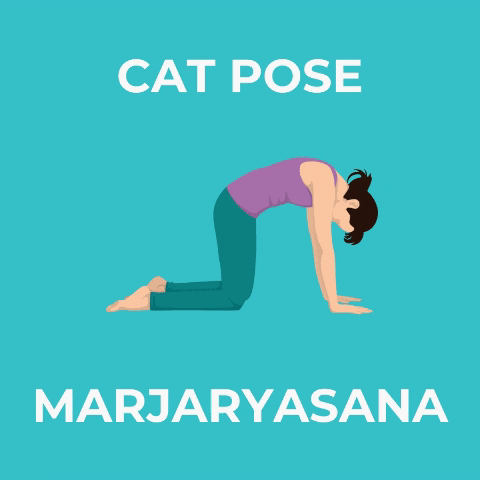
Cat-Cow
Your core and pelvis should drive the Cat-Cow flow As you inhale you create an anterior tilt to the pelvis so that your tailbone should face the ceiling, and while you exhale you create a posterior tilt so that your tailbone is facing the ground. This movement also helps increase spinal awareness, which is very important for perfect posture.
How to do it:
Start on all fours with your shoulders should be over your wrists, your hips store over your knees, and the top part of your feet pressed into the ground lengthen your head down to your tailbone to see a few inches in front of your fingers.
To begin the ‘cat’ phase, as you exhale use your abs to curl your spine towards the sky while tucking in your tailbone.
Allow your neck and allow your chin to reach down and in, toward your chest, so you can see your ears come down by your biceps.
To begin the ‘cow’ phase, as you inhale swoop and scoop your pelvis so your belly drops down to the floor.
Widen across your shoulder blades, keep your shoulders away from your ears, and lift your chin and chest to look up towards the sky.
Cycle through Cat-Cow sometimes, keeping stress and pressure out of the head and neck.

Knee to chest
Good for: lower back
Lie faceup on the floor.
Bend your one leg and bring it to your chest. Hold for 5-10 seconds, then release.
Repeat with your other leg.
Complete this sequence 3 time

Thoracic extension
Good for: upper and mid back
For good results, you’ll need a foam roller or a chair.
If you’re using a foam roller, position it under your mid back (thoracic spine).
Allow your head and buttocks to fall on either side.
Extend your arms above your head to promote the stretch.
If you’re using a chair, sit facing forward and allow your upper body to fall over the rear of the chair.
Extend your arms above your head for promoting the stretch.
Hold either position for 5 seconds, then release. Repeat 3 times.
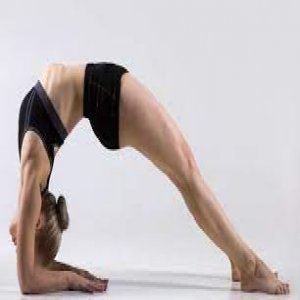
Bow pose
It helps to counteract slouched shoulders by stretching the pectoral muscles and strengthening upper back muscles.
How to do it?
Lie flat on your abdomen with your chin on the ground and your hand resting on either side of you.
Bend your knees and bring your heels as close to your gluteus as you can. Reach backward with both palms and grasp hold of your outer ankles.
As you inhale, raise your heels up toward the sky so that your chest, thighs, and upper torso elevate off the floor.
To intensify the stretch, try to elevate your heels higher while keeping your tailbone pressed into the floor.
Look forward and move your shoulders away from your ears.
Hold this position for 10 breaths.
Release an exhale by slowly letting down your thighs, and then relaxing your body, to the ground.

Chin tuck
It is a simple exercise you can do at your work, at your home. This simple stretch will help increase spinal awareness while strengthening the neck muscles to help pull your head back into alignment, says Cappo.
How to do it:
Sit up straight in a chair and keep your chin parallel to the ground. Without leaning your head in any direction, gently draw out your head and chin back, like you’re making a double chin. Be careful not to stick your head back. You should feel a stretch throughout the back of the neck.
Assume there’s a string pulling your head toward a higher level like a puppet, and actively elongate your neck.
Actively push the base of your head away from the base of your neck.
Keep your jawbone relaxed and hold this position for 3 deep breaths.
Release your chin forward. Repeat 10 times.
Strengthening exercises:
Strengthening the muscles in your neck, shoulder and back is remarkable to reduce and prevent pain.
Many of these movements involve dumbbells or resistance bands, and few use just your body weight.
Pick a mixture of both types, if possible.
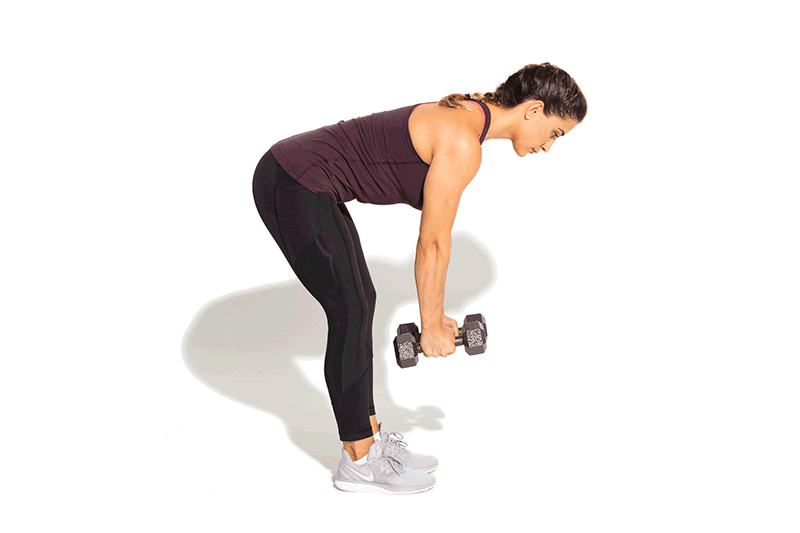
Row
Good for: upper back
Use a resistance band or a lightweight to medium dumbbell to finish this move.
Attach the resistance band to a pole or another stable surface and grab each handle, extending your arms.
Pull the handles straight back by bending your elbows, keeping them near to your body.
You should feel your lats (Latissimus dorsi) working.
If you’re using a dumbbell, hold it in your right hand and prepare yourself on a wall with your left hand, arm extended.
Hinge at the waist to a 45-degree angle, allowing the dumbbell to carry down.
Keep your neck neutral and your knees soft, pull the dumbbell perpendicular with a tucked elbow.
Perform 3 sets of 10–12 reps.
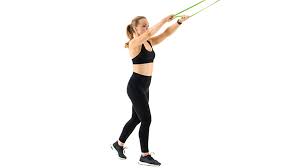
Face pull
Good for: shoulders and upper back
Use a resistance band to finish that move.
Attach the resistance band to a stable surface above eye level. Grab each handle with a grip.
Pull right toward your face, flaring your upper arms out to the sides and squeezing your shoulders together.
Pause, then return to the normal position.
Complete 3 sets of 12 reps.
Scapular squeeze
Good for: shoulders and upper back
While standing along with your arms down by your sides, squeeze your shoulder blades together.
Hold for 5-10 seconds, then release.
Repeat 3–5 times.

Wall angel
Good for: neck, shoulders, and upper back
Stand along with your back flat against a wall.
You’ll need to step your feet out slightly to allow your back to be completely against the wall.
Extend your arms bent to create a “T” shape against the wall, then bend your elbows to form 90-degree angles.
Slowly move your arms up and down during a “snow angel” movement, ensuring that they stay flat against the wall the full time.
When your fingers touch above your head, return to the normal position.
Complete 3 sets of 10-15 reps.

Reverse dumbbell fly
Good for: shoulders and upper back
Grab 2 light dumbbells and stand, hinged at the waist at a 45-degree angle, along with your arms hanging straight down.
Keeping your neck neutral and your gaze down, begin to lift your arms bent the sides and up.
Squeeze your shoulders together at the end of the movement.
Complete 3 sets of 10–12 reps.
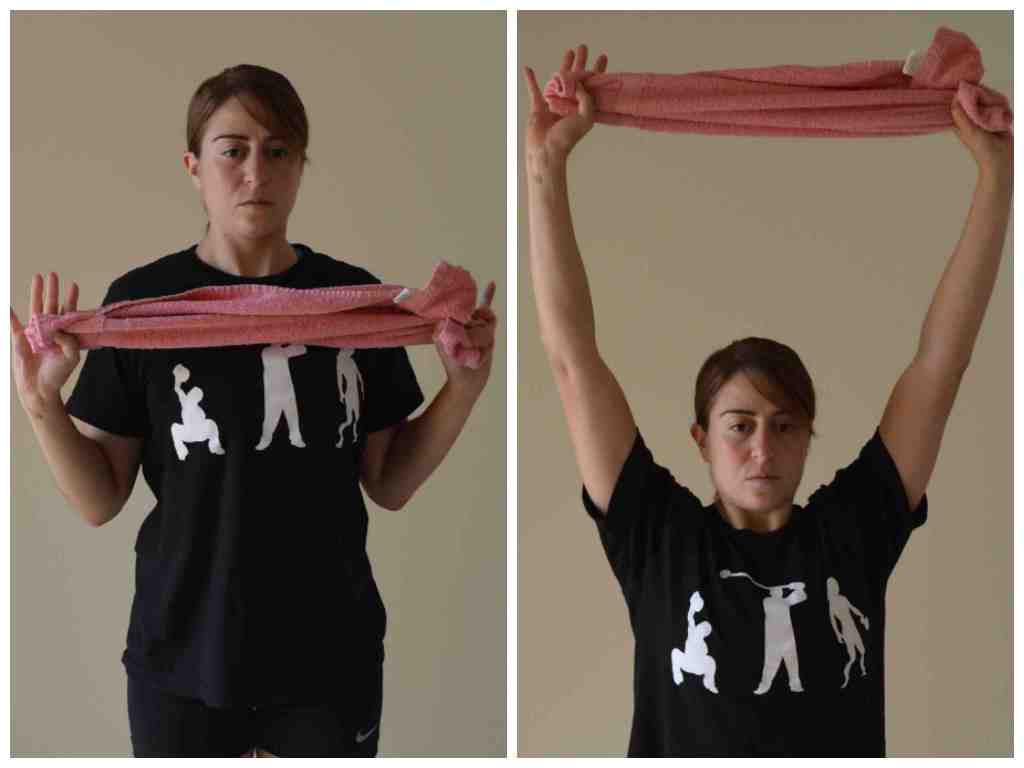
Lat pulldown
Good for: shoulders and upper back
Sit underneath a resistance band attached to a stable surface overhead.
Pull down on the band until your arms are parallel to the ground.
Pause at the underside, squeezing your lats, then return to the starting position.
Complete 3 sets of 10–12 reps.
Superman
Good for: mid and lower back
Lie on your stomach along with your arms extended above your head.
Keep your neck neutral, and lift your arms and legs off the ground at the same time.
Ensure you’re using your back and glutes to lift.
Pause briefly at the top, then return to the normal position.
Complete 3 sets of 10-12 reps of the superman exercise.

Static stretches for after your workout
Try to include a few static stretching once your workout is complete.
Pec stretch
Good for: chests and shoulders
You’ll need a doorway for this stretch.
Step into the corridor and place your forearms on the doorframe.
Make sure your elbows are flexed at a 90-degree angle.
Let your body weight fall forward slightly so that you feel a stretch in your chest and shoulders.
Hold for 10-15 seconds, then release.
Repeat 3-5 times.

Child’s Pose
Good for: shoulders, and back
Start on the ground on all fours.
With your big toes touching, spread your knees as far apart as they’ll go and sit your buttocks back onto your feet.
Sit straight up along with your arms extended above your head.
On your next exhale, hinge at the waist and let go of your upper body forward between your legs.
Allow your forehead to touch the ground, your shoulders to spread, and your buttocks to sink back.
Hold a minimum of 15-20 seconds.
Butterfly
Good for: shoulders and upper back
Put your hands on opposite shoulders and convey your elbows together to touch.
Hold for 10–20 seconds, then release.
Repeat 5 more times.
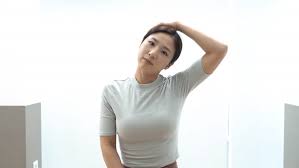
Upper trapezius stretch
Good for: upper back and neck
While sitting in a chair, take your right hand and place it on the back of your head.
Take your left hand and push it behind your back.
Using your right hand, slowly pull your head toward your right shoulder.
Hold this for 10–15 seconds.
Repeat on the other side.
Levator scapulae stretch
Good for: neck and upper back
While sitting in a chair, turn your neck 45 degrees to the left.
Bend your neck downward (assume you’re looking into a shirt pocket).
You can use your left hand for a good stretch.
Hold this for 10–15 seconds.
Repeat on the other side
The bottom line
Neck pain with shoulder pain can be frustrating and debilitating.
Do remember that if your neck pain with shoulder pain does not go away even after a month, it is important to consult a physiotherapist to get to the root of the problem. In a few cases, neck pain with shoulder pain can be treated at home with daily stretching and strength training. On average, your neck pain should get better within 15-30 days. It is also important to change your lifestyle for preventing neck pain with shoulder pain, including proper postures and keeping your phone on an eye level to prevent further neck pain with shoulder pain.
To relieve neck pain at home
Your doctor or physical therapist can recommend you can take it at home to relieve neck pain. These may include:
Using heat or ice packs twice a day for 10 min.
Doing gentle stretches or exercises which mention above.
Take medicines to relieve pain and inflammation such as ibuprofen.
Resting.
Temporarily stopping vigorous physical activity.
Long-term strategies to reduce neck pain include:
Quit smoking. Smoking slows healing.
Lose weight if you are overweight.
Reduce your stress level. Walk, meditate, get a massage, and exercise.
Do exercises that strengthen your neck and shoulder muscles and also self-stretch neck muscles.
How to select the proper pillow for Neck pain?
The best pillow for neck and shoulder pain is firm enough to hold the head at a correct angle but soft enough to alleviate pressure points. Most people find success with either memory foam, latex, buckwheat, or feather pillow, as these materials provide the best balance of support and pressure relief.
- Cervical pillows for neck pain relief
Cervical pillows especially provide neck support and keep your spine in proper posture while you’re asleep. It’s elevated where your neck is more compressed where your head lies. Your pillow would work ergonomically to support your neck. Cervical pillows come in different shapes and materials according to your comfort.
If you’re changeover from a regular pillow to a cervical pillow, you may feel discomfort for some days. Using it every day for taking a short rest during work can adapt easier. - Pillows that mold to the neck for back sleepers
Choosing the right pillow for your neck depends on how you sleep. If you sleep on your back, try to choose a pillow that molds to your head and neck so that your neck is enough to support. Memory foam pillows or water pillows are good choices for back sleepers. They keep their shape but adjust according to your body. - Firm pillows for side sleepers
If you sleep on your side, then choose a firm pillow. Place the bulk of the pillow under your neck rather than your head, which provides proper support to the spine.
It helps if the pillow has elasticated. A pillow with a elasticate is one with extra material in it, with the join into rectangular panels on all four sides of the pillow so that the cushioning adjusts when you move your head. A pillow without a elasticate has only two pieces, a top and a bottom that are stitched together. Side sleepers also need to put a pillow between their legs to help maintain spine posture. - Thin pillows for stomach sleepers
When you’re sleeping on your stomach you put stress on your back. So, you have to use a thin pillow or no pillow to avoid stress on your back. Also, use a thin pillow under the abdominal area that can help to decrease the stress on your back. - Horseshoe pillows when traveling
When traveling by car, plane, or train, a horseshoe pillow is great support for your neck.
If you have neck pain, don’t let your head bend to the side when you sleep during traveling. Make sure your neck is supported.
When to Call the Doctor?
Contact your doctor if you have neck pain that intrudes into work or other routine activities.
In some cases, neck pain can be a sign of a medical emergency. Look for urgent medical care if your neck pain:
Develops after an accident.
If you feel numbness or tingling in the arms, shoulders, or legs.
Weakness in arms and legs or loss of coordination in arms or legs.
Neck pain includes headache, dizziness, nausea, or vomiting.
Arises along with a stiff neck.
Occurs with cold, fever, or unexplained weight loss.
Does not respond to over-the-counter medications.
Does not lessen after one week.

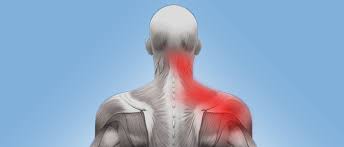
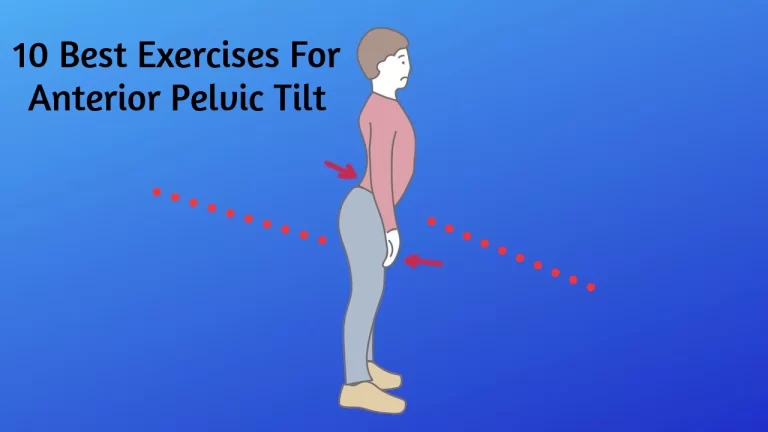
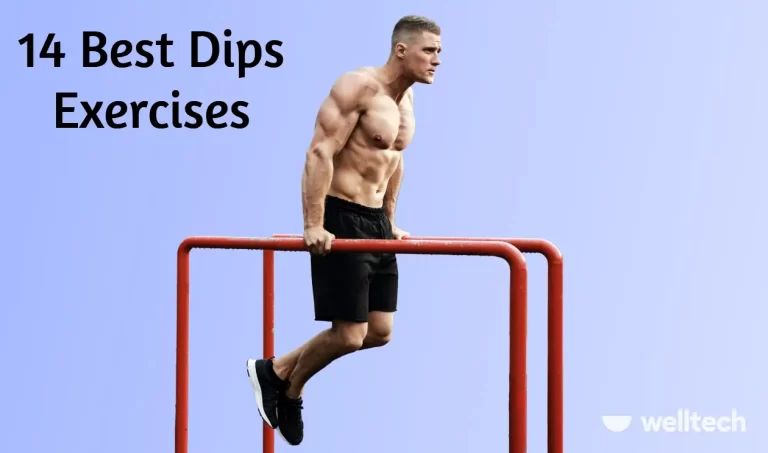
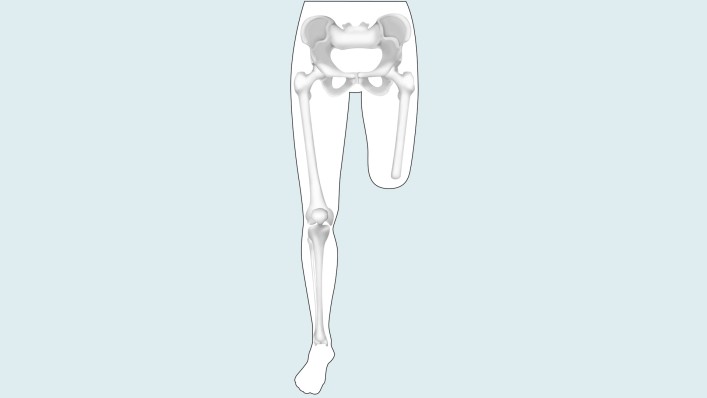

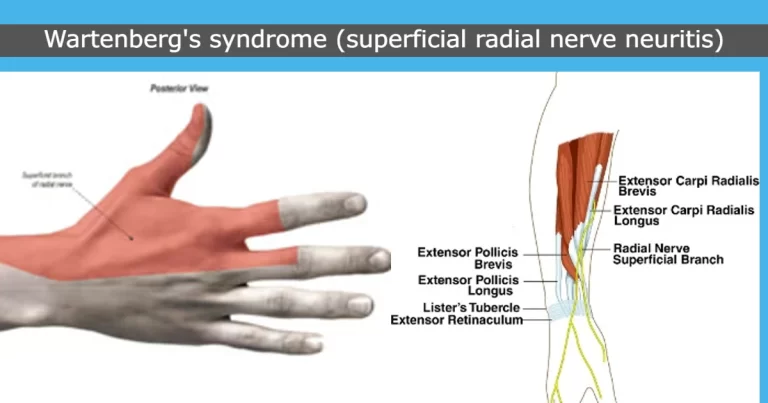

4 Comments